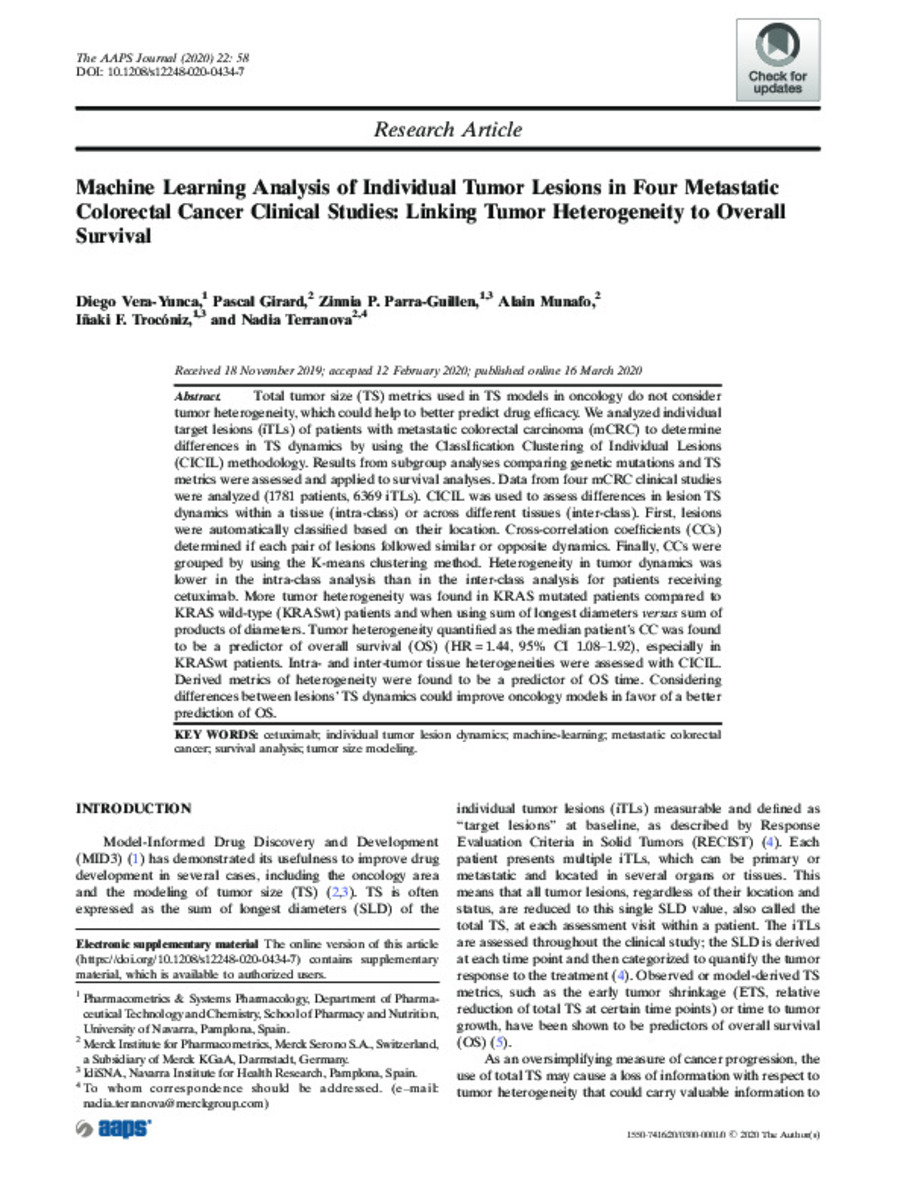Machine Learning Analysis of Individual Tumor Lesions in Four Metastatic Colorectal Cancer Clinical Studies: Linking Tumor Heterogeneity to Overall Survival
Keywords:
Cetuximab
Individual tumor lesion dynamics
Machine-learning
Metastatic colorectal cancer
Survival analysis
Tumor size modeling
Editorial note:
Springer Nature remains neutral with regard to
jurisdictional claims in published maps and institutional affiliations.
Note:
This article is licensed under a Creative
Commons Attribution 4.0 International License, which permits use, sharing, adaptation, distribution and reproduction in
any medium or format, as long as you give appropriate credit
to the original author(s) and the source, provide a link to the
Creative Commons licence, and indicate if changes were
made. The images or other third party material in this article
are included in the article's Creative Commons licence, unless
indicated otherwise in a credit line to the material. If material
is not included in the article's Creative Commons licence and
your intended use is not permitted by statutory regulation or
exceeds the permitted use, you will need to obtain permission
directly from the copyright holder. To view a copy of this
licence, visit http://creativecommons.org/licenses/by/4.0/.
Citation:
Vera-Yunca, D. (Diego); Girard, P. (Pascal.); Parra-Guillen, Z.P. (Zinnia Patricia); et al. "Machine Learning Analysis of Individual Tumor Lesions in Four Metastatic Colorectal Cancer Clinical Studies: Linking Tumor Heterogeneity to Overall Survival". The AAPS Journal. 22 (58), 2020,
Statistics and impact
0 citas en

0 citas en

Items in Dadun are protected by copyright, with all rights reserved, unless otherwise indicated.







